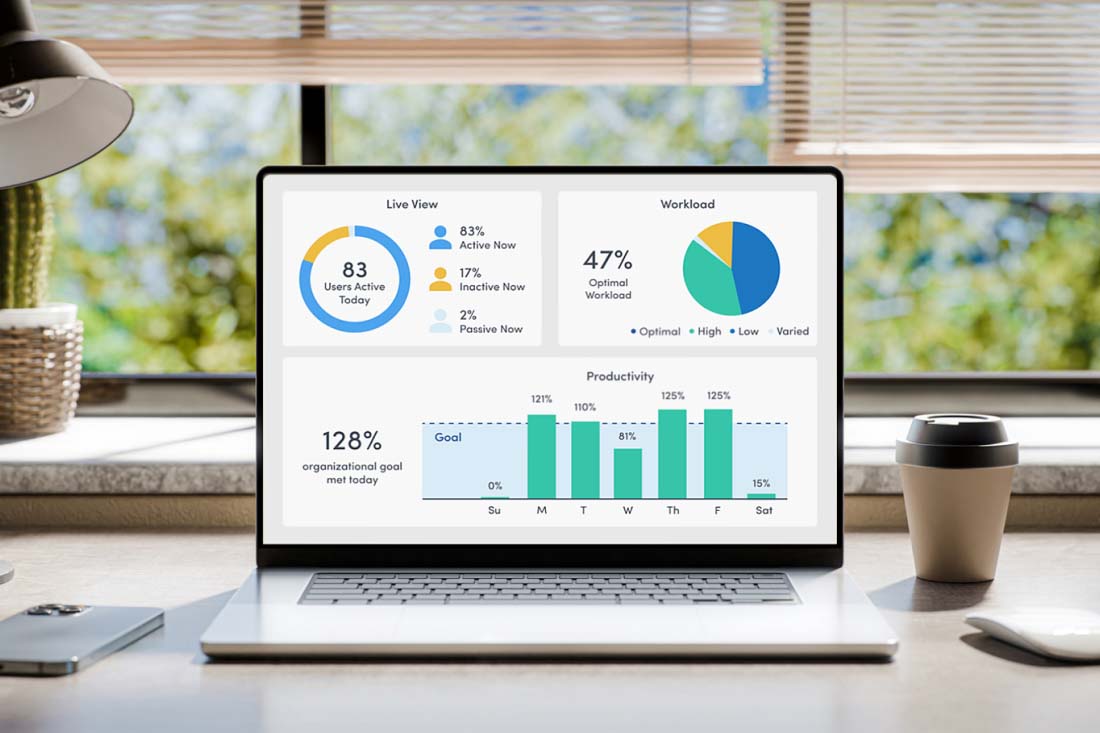In the shift toward what looks like a more permanent remote workforce, companies also need to shift their remote work strategies from one of reacting to a crisis to one of supporting a culture of trust and empowerment.
With a remote team comes a new type of work culture, and it’s one that managers and company leaders need to embrace if they want their workforce to not only adapt and grow with the changing times, but also continue to build a mutual trust with their companies.
To build trust with remote teams, companies can utilize remote workforce management tools and use data to guide their employees with helpful intent rather than for punitive purposes. Below, we’ll go over a few ways these tools can build trust with remote teams by providing more flexibility, optimizing productivity, and providing a supportive work culture.
Employees can build a schedule that works for them
The key to building trust with remote employees is to provide them with the flexibility to get work done at a time that works best for them. The traditional work day no longer looks the same; with all family members of a household working or learning from home at the same time, schedules may need to shift. Working parents are constantly switching between their two roles—one minute they may be leading a meeting and the next they’re helping kids with online school. Trying to achieve everything that needs to get done in one work day as both an employee and a parent can lead to higher levels of unproductivity, stress and even burnout.
The solution? Instead of feeling pressured to be productive during the traditional 8-5 work day, employees need to feel that they can build a schedule that allows them to be as productive as possible during the times that work best for them.
Company leaders can enable this—and build trust with their remote team—by using remote workforce management tools which allow employees to design their workdays around a schedule that truly optimizes their productivity.
Tools like ActivTrak will show employees when they are the most productive, even if those hours fall outside of the traditional work day. Having access to data like this can support flexible schedules and ultimately create win-win situations for employers and employees alike. With employees working when they are typically the most productive, they’re able to give their task their full attention and, in turn, produce their best work.
Optimize team productivity with focus time
According to a recent survey conducted by GetApp, 82% of employees reported feeling pressured to work more hours now that they’re remote. Combine that with the pressure to always be online and available at all hours of the day, and you’re left with very few windows of time when remote employees can fully focus on a single task that needs to get done. But there are times when employees need to tackle a project that requires an extended period of focus, and they should feel comfortable turning off messaging tools in order to do so.
In fact, studies have shown that focusing on just one task, or monotasking, is more productive than multitasking, and recommended strategies include batch work, the Pomodoro method, and time blocking, to name a few. For employees to be able to focus on projects in this way, however, workplace distractions need to be limited. Communication overload, in particular, has proven to be a major contributing factor to lower productivity levels.
As a manager, part of your job when managing a remote team is to reinforce the idea that employees don’t always need to be “on” or available the same way they would be in an office. Even though they appear to be offline, there’s a mutual understanding between team members that the employee is still being productive.
When employees feel that they are trusted to get their work done despite appearing to be offline, they are able to give their full attention to a task without any interruptions or distractions, which will ultimately allow them to produce better work. And if managers still have reservations about their remote team being unavailable for an hour or two, remote workforce management tools like ActivTrak provide the data and insight to back up the hard work employees were doing while away from their messaging tool.
Managers can build a supportive team culture
Leaders are expected to support their teams through both the challenges and the wins of the workplace—and managing a remote team is no different.
By using data provided by remote workplace management tools, managers can gain valuable insight that can improve the way they lead and support their teams. The key, however, is to use the data in a way that positively supports team members rather than as a micro-managing tool. The insights gained from workforce productivity and analytics tools are designed to shed light on the things that could be helping or hindering an employee’s performance and identify opportunities to improve the remote team’s overall working environment.
For example, managers may notice that teams are spending more time than expected in workday meetings. Using analytics data, managers can come up with a solution to reduce meetings and allow employees to spend more of their day on productive activities, which reduces the need for after-hours work. This is not only a solution to improve the team’s productivity, but it could also be a way to cut costs when budgets are tight or make the case for additional resources if necessary.
It’s no secret that working from home can also blur the lines between work and personal life. With many just a few steps away from their home office setup, some employees have a hard time disconnecting. In an April 2020 survey conducted toward the beginning of the pandemic, 41% of employees said they were burned out due to an increased workload and difficulties maintaining work-life balance.
By gaining insight into when employees are working using workforce analytics tools, managers can see who might need some encouragement to find a better work/life balance. And just like a manager would step in to support an employee in the office, managers can do the same with their remote team when they notice that they may need guidance or encouragement in navigating a remote work culture.
Don’t have a remote workforce management tool yet?
Create a free ActivTrak account in only minutes (no credit card required).
Take your data further with ActivConnect
Already an ActivTrak customer? Easily integrate your ActivTrak data with your software stack for deeper analytics into how work gets done. Learn more.
About ActivTrak
ActivTrak is a workforce productivity and analytics software company that helps teams understand how people work, whether in-office or remote. Our cloud-based user activity monitoring platform collects and analyzes data and provides insights to help organizations be more productive and compliant. With more than 8,000 customers and over 250,000 users of its free version, ActivTrak’s award-winning solution can be configured in minutes to identify operational bottlenecks, flag operational compliance risks, while providing valuable insights that help employees and employers improve productivity outcomes.





